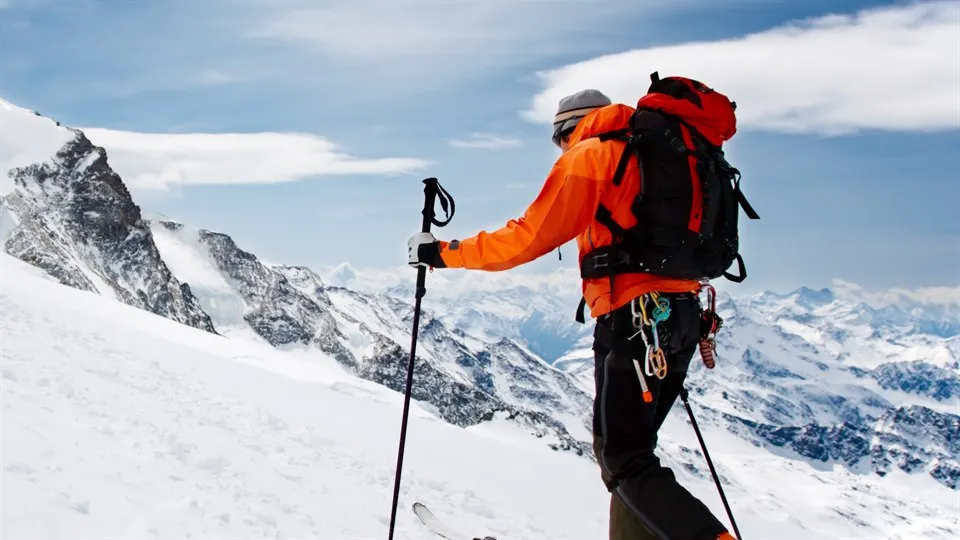Materials and durable equipment
Interest in sports and outdoor life is increasing and people are spending a lot of money on clothes and equipment. We wanted to develop more sustainable materials and material flows, as well as find working methods, tools and methods for recycling and reusing equipment.
The research theme
In 2018, the outdoor industry contributed approximately SEK 5.6 billion to Sweden's GDP. In addition, most sports and outdoor activities are very equipment and technology intensive.
More sustainable materials and the importance of environmental assessments
A challenge for product manufacturers in the sports and outdoor industry is that the use of polymers and plastics is made from ordinary oil. Large amounts of plastic are used in very short-lived products such as packaging materials, plastic bags, disposable glasses, cups, cutlery and plates. Much of the clothing used is also based on polymers. The same applies to backpacks, tents, canoes, skis, helmets and more. When you examine all the uses of polymers in the industry, you realize that the development of recycled and more environmentally friendly polymers needs to have a greater impact on the development of equipment.
The environmental assessment linked to the manufacture of equipment in the sports and outdoor industry is far behind many other industrial products such as vehicles, building structures, household electronics and even food products.
Design, processes and business models for smarter material flows
We wanted to contribute to the development of sports and outdoor equipment so that resource use and negative environmental impact are minimized, while optimizing the user experience and product performance. There is a need for new approaches in both material and product design, new types of environmentally friendly garment processing and business modelling that meet today's expectations for sustainable products.
Functionality and great potential
Functionality and sustainability, with a focus on both reuse and recycling, are some examples of important criteria that designers and developers must take into account in a circular manufacturing process.
Equipment and clothing in the sports and outdoor industry also have great potential for new forms of second-hand markets as there are environmental benefits with the reuse of materials and products. That's where we researchers, in collaboration with the industry, wanted to find new ways.
Result
Read about the theme's results in the final report on Mistra Sport & Outdoors phase 1 (pdf)
Read about the theme in Mistra Sport & Outdoor's final popular science report (pdf) in Swedish
Research group
- Mikael Bäckström, theme leader, professor of mechanical engineering at Mid Sweden University
- Itai Danielski, Deputy Theme Leader, PhD in Ecotechnology and Civil Engineering at Umeå University
- Anna Björklund, Professor of Environmental Strategy Studies at the Royal Institute of Technology
- Judith Waller, PhD in Materials Science and Engineering at Mid Sweden University
- Hampus André, PhD in Environmental Systems Analysis at the Royal Institute of Technology
- Louisa Nilsson, PhD student (now licentiand) in mechanical engineering with a focus on sports technology at Mid Sweden University
Learning groups
In the theme Materials and Sustainable Equipment there were two learning groups; Materials and equipment and Facilities and surfaces.
Learning group Materials and equipment
The learning group Materials and Equipment worked to develop knowledge and solutions within the following issues:
- What can contribute to minimized environmental impact and more circular solutions over the life cycle, for materials and equipment in sports and outdoor life?
What examples of measures and solutions are important for:
- Manufacturers and retailers of materials and equipment?
- Practitioners of sports and outdoor life?
- Associations, clubs or other associations in sports and outdoor life?
- Decision-makers with the opportunity to influence the planning and practice of sports and outdoor life?
Learning group Materials and equipment consisted of the following actors:
- Swedish Environmental Protection Agency, Rebecka Uggla
- The Swedish Society for Nature Conservation, David Gunnarsson
- Patagonia, Jennie Swadding and Anton Svanborg
- Researchers: Mikael Bäckström, Judith Waller and Louisa Nilsson Mid Sweden University, Itai Danielski Umeå University, Anna Björklund and Hampus André, KTH
- Facilitator: Karin Svärd Hertel
Learning group Facilities and surfaces
The learning group Facilities and Surfaces worked to develop knowledge and solutions within the following issues:
- What is the environmental impact of surfaces and facilities for sports and outdoor recreation?
- What measures promote sustainability when it comes to surfaces and facilities in sports and outdoor recreation?
Learning group Facilities and areas consisted of the following actors:
- The client group for artificial turf, Pernilla Holgersson
- Ecoloop, Fredrick Regnell
- The Swedish Sports Confederation, Jonnie Nordensky
- Swedish Football Association, Niklas Callenmark
- Researchers: Anna Björklund and Hampus André, KTH, Itai Danielski and Judith Waller, Mid Sweden University
- Facilitator: Karin Svärd Hertel
